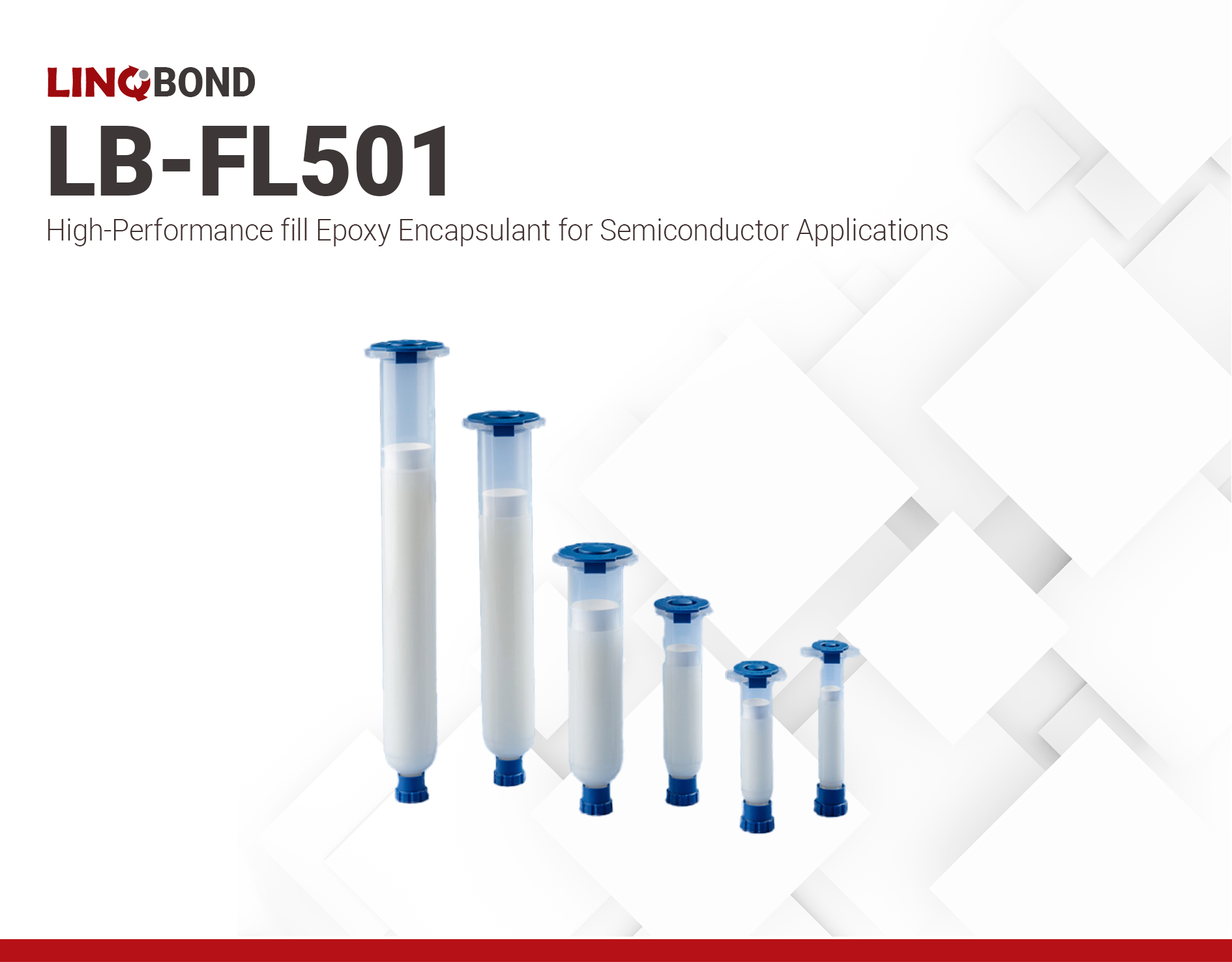LINQBOND LB-FL501 | Fill encapsulant
- Fill
- Low CTE a1: 23 ppm/°C
- Easily flow, low viscosity
Product Description
LINQBOND LB-FL501 is a high-performance, one-component fill epoxy encapsulant specifically designed for demanding semiconductor applications. Formulated with a low thermal expansion coefficient (CTE1: 23.2 ppm/°C, CTE2: 76.6 ppm/°C), LB-FL501 provides exceptional thermal stability and protects sensitive components from mechanical stress and environmental factors. Its excellent operability combined with a viscosity of 37,000 cps at 25°C ensures easy handling and precise dispensing, while its strong adhesion and chemical resistance contribute to the overall reliability of electronic assemblies.
LINQBOND LB-FL501 epoxy encapsulant offers superior resistance to a wide range of chemicals and solvents, safeguarding components from degradation. Additionally, LB-FL501 exhibits outstanding heat shock resistance, making it suitable for applications that experience rapid temperature fluctuations. Typical applications include IC memory cards, chip carriers, hybrid circuits, chip-on-board, multi-chip modules, BGA, and pin grid arrays. It comes in 5, 10, 30 and 50cc syringes.
Cure Schedule
- 30 minutes @ 135°C plus 90 minutes @ 175°C
Technical Specifications
| General Properties | |
| Density (g) | 1.8 g/cm3 |
| Work life @25°C Work life @25°C Work life is the amount of time we have to work with a material until it is no longer able to be easily worked and applied on a substrate. It is based on the change in viscosity and it can rely on the application requirements. | 72 hours |
| Thermal Properties | |
| Glass Transition Temperature (Tg) Glass Transition Temperature (Tg) The glass transition temperature for organic adhesives is a temperature region where the polymers change from glassy and brittle to soft and rubbery. Increasing the temperature further continues the softening process as the viscosity drops too. Temperatures between the glass transition temperature and below the decomposition point of the adhesive are the best region for bonding. The glass-transition temperature Tg of a material characterizes the range of temperatures over which this glass transition occurs. | 181 °C |
| Physical Properties | |
| Viscosity Viscosity Viscosity is a measurement of a fluid’s resistance to flow. Viscosity is commonly measured in centiPoise (cP). One cP is defined as the viscosity of water and all other viscosities are derived from this base. MPa is another common unit with a 1:1 conversion to cP. A product like honey would have a much higher viscosity -around 10,000 cPs- compared to water. As a result, honey would flow much slower out of a tipped glass than water would. The viscosity of a material can be decreased with an increase in temperature in order to better suit an application | 37,000 mPa.s |



